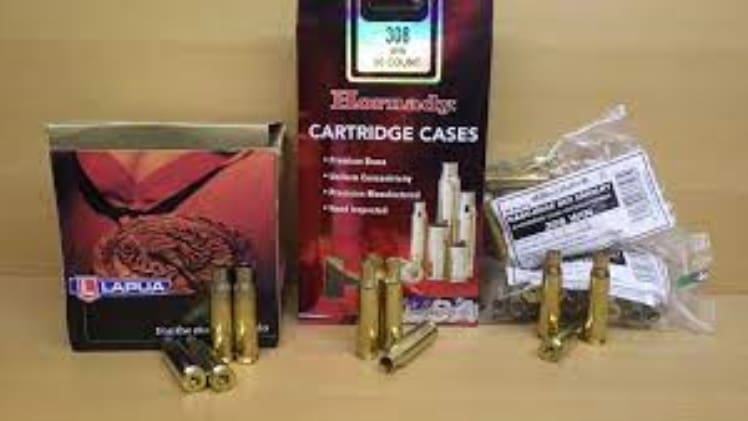Primers are metallic cups containing an explosive mixture that is sensitive to impact or pressure and used to initiate the combustion that results in the firing of the bullets from the gun barrel. Primers come in different types and sizes depending on the type of firearm and cartridge being used.
Today’s primers date back to 1805 when they replaced the flintlock ignition system. The invention of the modern-day primer made ignition more reliable and practical. Nowadays, two priming systems stand out in the world of firearms and artillery—Berdan and Boxer. While Berdan primers are prevalent in Europe, Boxer primers are widely used in the United States.
When choosing a reloading primer, keep in mind that primer sizes and types have a great effect on the load’s pressure and accuracy. Therefore, it’s important to choose the one that suits your firearm.
Size-Based Primers
Based on the size of the gun caliber, there are small and large primers. They differ in:
- cup thickness
- sensitivity
- dimensions
- priming composition mixture
- quality control standards applied during the production process
Check out Natchez primers to find quality primers for your firearm.
The following paragraphs will help you learn how to best select a primer based on your firearm and its intended application.
Small Primers
Small primers include Small Pistol primers, Small Magnum Pistol primers, Small Rifle primers, Small Rifle Magnum primers, and Small Rifle Benchrest/Match primers. The diameter for a small rifle and pistol is .175”.
Standard Small Pistol primers
Small pistol primers refer to primers mostly used in small handgun cartridges—both standard and magnum. They allow for fast burning and easy ignition. They are suitable for cartridges ranging from .357 Magnum to .25 ACP.
Small Pistol Magnum primers
Small Pistol Magnum primers are a fitting choice for slow-burning propellants such as spherical or ball powders or using small pistol calibers in an extremely cold shooting environment. The best primers in this category include Winchester WSPM and CCI 550.
Standard Small Rifle primers
The Small Rifle primer’s diameter is the same as the diameter of the Small Pistol primer—.175”. However, these primers cannot be used interchangeably. Small Rifle primers’ cups are heavier so they can handle more powerful small-cased rifle cartridges including .222 and .223 Remingtons.
Although meant for rifles only, there are exceptions. You can use Small Rifle primers for particularly high-pressure pistol cartridges, namely .357 Maximum and .221 Fireball.
Small Rifle Magnum primers
Compared to standard Small Rifle primers, Small Rifle Magnum primers provide a flame of higher intensity and ignite larger amounts of powder. It is best you use them in subzero temperatures and with certain ball powders. Small Rifles Magnum primers to consider are Federal 205, .22 Cheetah, CCI 450, etc.
Small Rifle Benchrest/Match primers
Among other small rifle primers, Small Rifle Benchrest/Match primers provide the best accuracy. You can opt for Small Rifle Benchrest/Match primers such as Federal 205M and Remington 7 1/2.
Large Primers
Large primers include Large Pistol primers, Large Rifle primers, Large Rifle Magnum primers, and Large Rifle Benchrest/Match Primers. The diameter for a large rifle and pistol is .210”.
Standard Large Pistol primers
Large Pistol primers are used with large caliber cartridges including 10mm Auto, .45 Colt, .45 ACP, etc. Although meant for pistols, these primers can also be used for rifles with pistol cartridges such as the .45 Colt cartridge chambered in Winchester M94 Trapper.
Large Pistol Magnum primers
Just like Small Pistol Magnum primers, they provide additional power suitable for subzero conditions and larger loads of slow-burning powders such as Winchester 296 and H110. Large Pistol Magnum primers you may find useful are CCI 350 and Federal 155.
Standard Large Rifle primers
Standard Large Rifle primers fit most rifle reloading applications. This depends on the type of cartridge and the conditions in which you use the ammo. Even if the case is marked as “magnum”, it might not require a magnum primer. Instead, standard primers such as Remington 9 1/2 or Federal 210 can be more appropriate.
Large Rifle Magnum primers
Designed for larger charges of slow-burning powders frequent in bigger rifle cartridges, Large Rifle Magnum primers such as Federal 215 or Remington 9 1/2 M can ignite substantial powder charges. Keep in mind that magnum primers require higher pressures compared to standard ones, despite the same load.
Large Rifle Benchrest/Match primers
If you are looking to hunt and require extreme accuracy, Large Rifle Benchrest/Match primers can be very useful. Primers such as CCI BR-2 and Federal 210M are great examples of match-grade primers for either competitive or hunting applications.
Ignition-Based Primers
Also, we differentiate between two types of primers based on the ignition:
- Primers based on shock-sensitive chemicals ignition—such primers are mostly used in smaller guns such as handgun and rifle cartridges, and shotgun shells; they tend to be integrated into a cartridge.
- Primers based on electrical ignition—such primers are used in larger firearms and are usually not integrated into a cartridge; they often come separately and are inserted into the barrel.
Conclusion
The most important thing to keep in mind when choosing a reloading primer is that rifles and guns do not use the same amounts and types of primers. Different primers burn at different speeds and temperatures. It is also essential to use primers that are compatible with the specific cartridge being loaded, as some cartridges require certain types of primers to function safely and reliably.
Reloading should only be done by experienced and knowledgeable individuals who follow safe reloading practices and always pay close attention to the details of the reloading process, including the selection of the correct type and size of primer.

